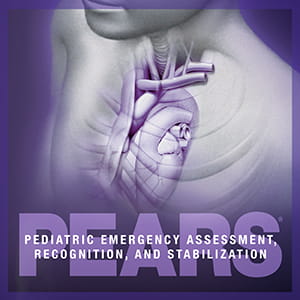PEARS Provider Course
The AHA’s PEARS (Pediatric Emergency Assessment, Recognition and Stabilization) Course has been updated to reflect new science in the 2015 AHA Guidelines for CPR and ECC. In this classroom-based, Instructor-led course, students learn how to use a systematic approach to quickly assess, recognize the cause, and stabilize a pediatric patient in an emergency situation.
The goal of the PEARS Provider Course is to improve outcomes for pediatric patients by preparing healthcare providers in assessment, early recognition, prompt communication, and initial intervention in patients with respiratory emergencies, shock, and cardiopulmonary arrest by using high-performance team dynamics.
This is the International English (IVE) version of the PEARS Course. IVE training materials have been updated to include metric units of measure and other references that do not apply to students in the US and Canada.

Supported Languages
English, Japanese, Spanish
Formats Available
Instructor-led, eBook
- Systematic pediatric assessment
- Recognition and stabilization of respiratory emergencies
- Recognition and stabilization of shock emergencies
- Recognition and stabilization of cardiopulmonary arrest
- Resuscitation team concept
Os alunos podem concluir o treinamento on-line no próprio ritmo, enquanto as empresas e organizações de saúde podem superar obstáculos, como agendamento, comunicação com funcionários remotos e estilos de aprendizado distintos.